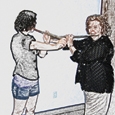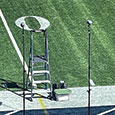This past summer I took a number of pictures for Flute Talk. Some were of individuals, and others were of groups. As I reviewed them, I realized the most common problem flutists have is how to balance the flute in the hands. If the flute is balanced correctly, everything is better. Intonation is truer and easier to control. Scales and arpeggios flow evenly and effortlessly. Trills are faster and more even. One of the biggest bonuses is the ability to play without pain.
Where to Balance the Flute
Several flute methods suggest having the flute touch on the side of the left index finger. Alan H. D. Watson writes in The Biology of Musical Performance and Performance-Related Injury (p. 85): “The main nerve branches that supply the fingers and the thumb run up their sides (note line on left index finger in photo) where they may be vulnerable to compression in some instruments. For example, in the left hand of flutists the instrument rests partly on the side of the first segment (phalanx) of the index finger, just below the PIP joint, where it may rest on the digital nerve.” If a flute rests on a nerve, it is not if the nerve gets compressed, but when. I prefer balancing the flute just above the knuckle. (X marks the spot.)
.jpg)
The Left Thumb
Traditionally the position of the left thumb is not addressed in flute pedagogy, but it should be. The left thumb should be straight when playing.
.jpg)
If the thumb is bent, then there may be tension in the arm.
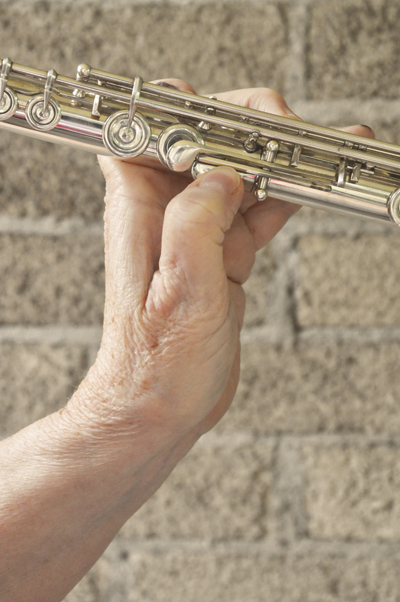
Playing with the thumb bent, means the tip of the thumb is touching the thumb key. In this position, the left wrist is compromised.
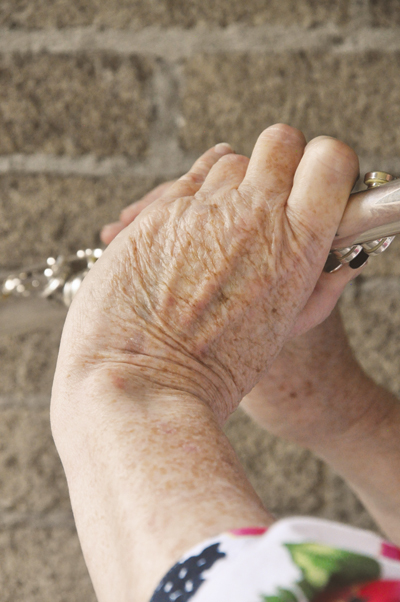
However, if the left thumb is straight and touches the thumb key lower down the thumb, the left wrist is in a more neutral position. I think of having the bottom of the thumb key touching at the crease of my left thumb.
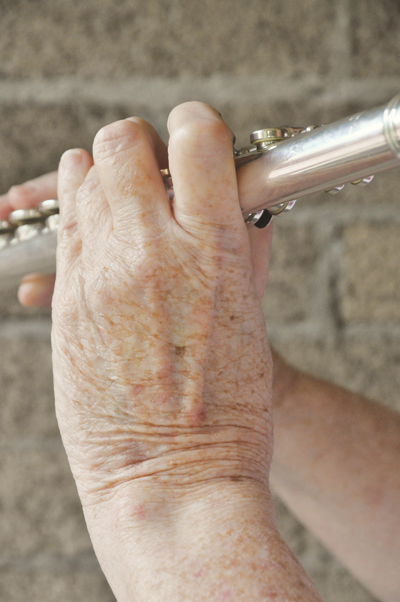
The Right Thumb
For many years violin pedagogy has used a soda can test to discover where to place the right thumb on the bow. This works well for flutists too. Pick up a soda or soup can with your right hand and look at how you hold it. After many years of experiments, I have found that 1/3 of flutists are most comfortable with the thumb directly under the index finger, 1/3 with the thumb placed between the index finger and middle finger, and 1/3 with the thumb directly under the middle finger. Look on the following page for photographs that show hand placement on the soda can and how it relates to the positioning of the right hand thumb on the flute. Take the soda can test several times for accuracy.
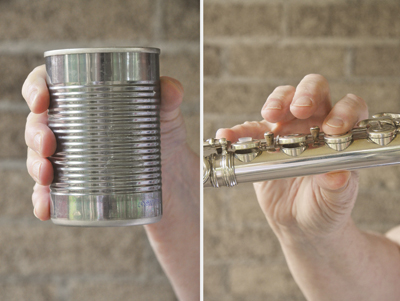
Thumb directly under the index finger
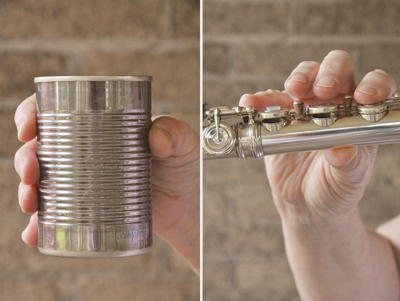
Thumb between index finger and middle finger
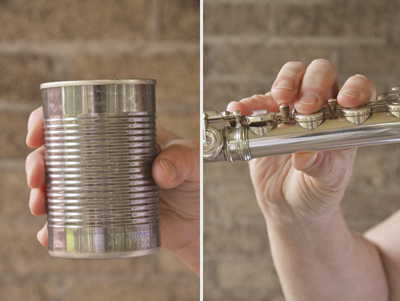
Thumb directly under middle finger
Susan Fain, DMA and Physical Therapist, suggests positioning the thumb slightly down the flute toward the little finger when playing footjoint note passages. After the low note passage is completed, move the thumb back to your most comfortable position.
Right-Hand Knuckle Height
If you want to play fast, keep the right knuckle height the same as the keys.
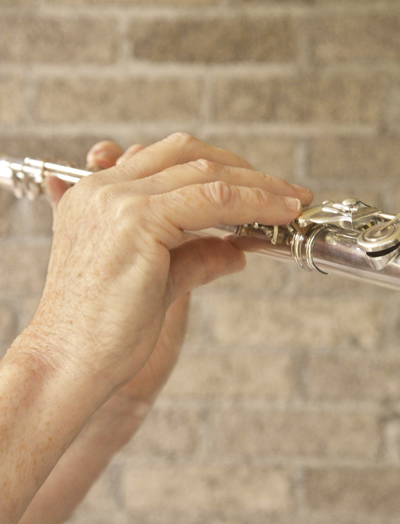
The position allows gravity to help the fingers come down again after they are lifted. If the knuckles are too low, then the player does all the work of lifting and lowering the fingers.
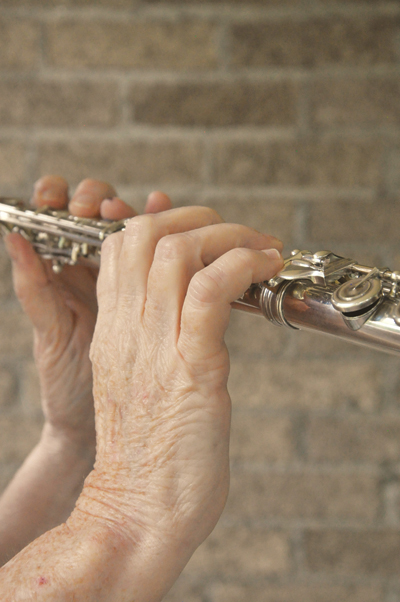
Setting the Right Hand
Many flutists complain about covering the holes, especially the D key, with the fingertips. Rather than placing the F finger on the flute first and then positioning the other fingers, try placing the E finger first and then setting the fingers. You may find a better balance position.
.jpg)
What about the Wrists
Turn your hands over with the palms facing the ceiling. This is the position your hand should be in to perform tasks like playing the flute or picking up an apple.
.jpg)
Several pedagogical methods suggest playing with straight wrists. The following photo shows a straight wrist. Note in this position you will not be able to perform such tasks as picking up an apple.
.jpg)
If you put your hand back in the first position, notice what happens to the wrist. This is the preferred position for the wrists when playing the flute.
.jpg)
Get Your Money’s Worth
Flutists often pay thousands of dollars for a flute of their dreams. The angle at which the flutist positions the flute when playing will determine whether he gets his money’s worth. To determine the proper playing angle, gently push the flute forward and then back as if the embouchure plate is rocking to the left and then to the right on the chin. Listen for any change of sound. There will be one spot where the sound is best. This is called the sweet spot. It is where you should position the flute. Most flutes seem to sound best when the end of the flute is in front of the player’s nose.
.jpg)
However, most flutists position the flute too far back as shown below.
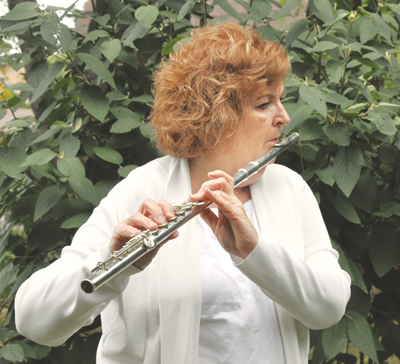
In this position the right shoulder may eventually hurt, and the flute will sound several thousand dollars less good than what you paid for it.
The goal is to play as well as possible as well as pain free and ergonomically. Video tape yourself to see how you actually play. You may be surprised at what you discover.
